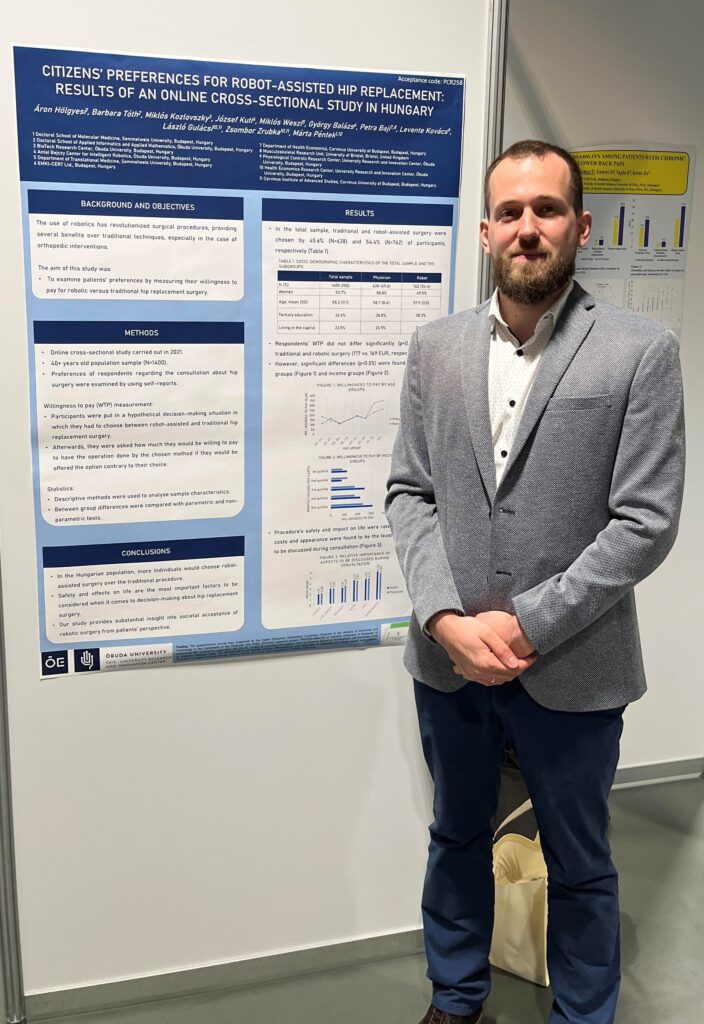How does the Hungarian population feel about the increasing use of digital health technologies, including robot-assisted surgical procedures? How many people currently have orthopedic implants or implantable devices for bone fixation in Hungary? What is the level of patient knowledge about the devices they wear? These are some of the questions that the researchers at the Health Economics Research Center (HECON) at the University Research and Innovation Center (EKIK) recently sought to answer in a cross-sectional study.
Dr. Áron Hölgyesi, a researcher at the center, presented the preliminary results in the form of two poster presentations at the international ISPOR Europe conference, held in Vienna from November 6-9, 2022. The study provides new data on the prevalence of orthopedic implants and helps understand the relationship between patient knowledge about implantable devices and their impact on daily life. It also enables the patient-centered evaluation of the social acceptance of robot-assisted surgery.

In the first part of the study module, the self-reported frequency of orthopedic implants and bone fixation devices was found to be high, with 9.4% of participants living with at least one such implant. The participants’ average knowledge regarding the general use and safety of the implanted device, as well as their ability to recognize medical problems requiring assistance, was similar. However, higher levels of knowledge were observed among older respondents, and knowledge was positively correlated with the impact of the implanted device on daily life (r=0.262, p<0.01).
In the second part of the study module, public preferences regarding robot-assisted surgery were determined using the willingness-to-pay method. Participants were asked to choose between hip replacement surgery performed exclusively by a surgeon or with the assistance of a special robot arm and to determine how much they would be willing to pay to undergo the chosen procedure. In the total sample, a higher proportion of participants chose surgery performed with the assistance of a robot (54.4% vs. 45.6%). The amount offered for the two procedures did not differ significantly between the two groups, but higher levels of willingness to pay were observed among older respondents and those with higher incomes.
As digital technologies continue to penetrate healthcare, the use of robotic solutions is becoming increasingly widespread in various fields, including orthopedics. The study aims to contribute to a better understanding of patient attitudes and preferences regarding these innovative technologies. The original English abstracts related to the posters can be accessed through the following links:
- Citizens’ Preferences for Robot-Assisted Hip Replacement: Results of an Online Cross-Sectional Study in Hungary (https://www.ispor.org/heor-resources/presentations-database/presentation/euro2022-3568/120378)
- Living with Orthopaedic Implants: Results of an Online Cross-Sectional Study in Hungary (https://www.ispor.org/heor-resources/presentations-database/presentation/euro2022-3566/120412)


